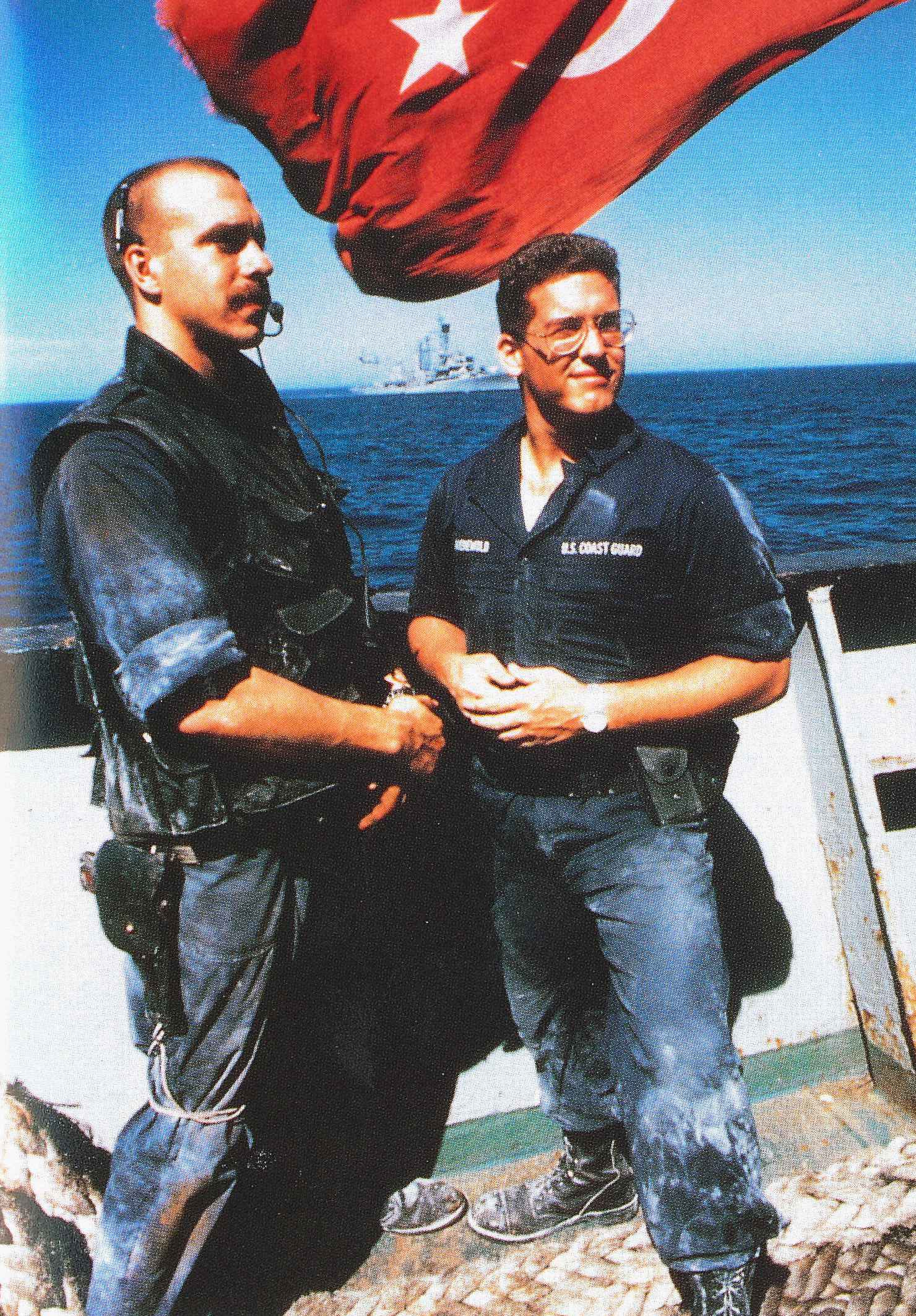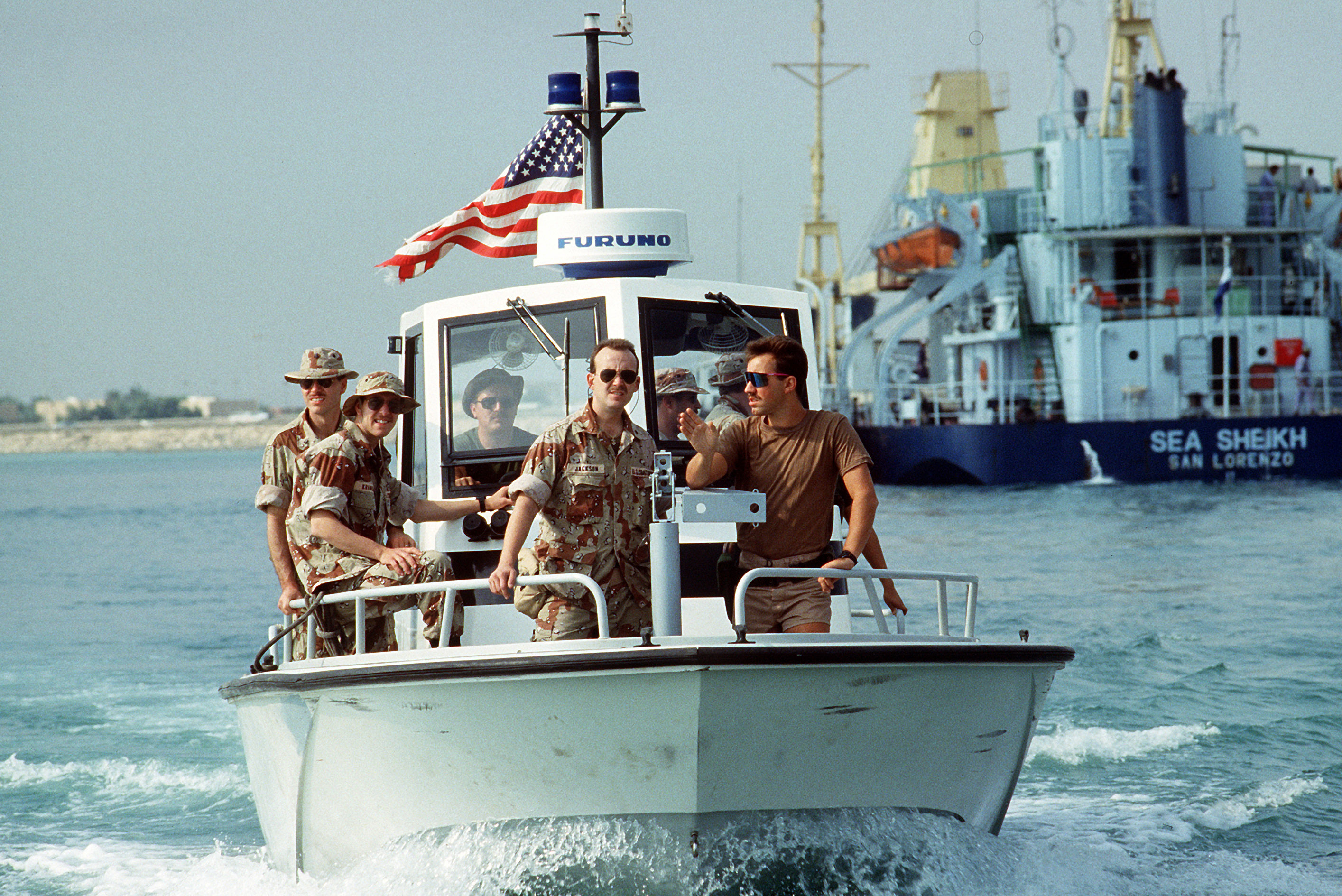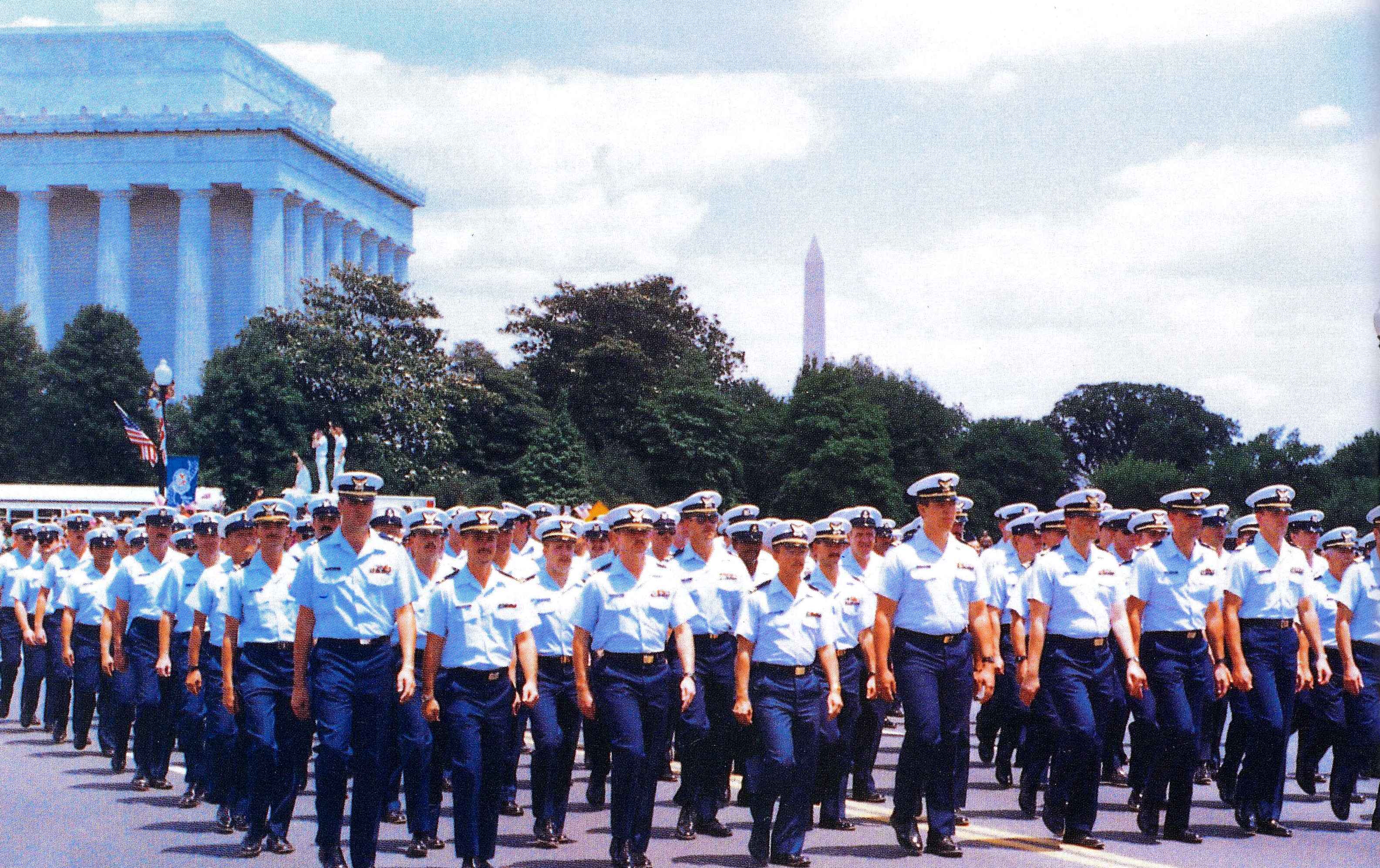Units and personnel of the United States Coast Guard and its predecessor services have served with distinction in every major American conflict since the founding of the United States and the Persian Gulf War of 1990-1991 and operations “Desert Shield” and “Desert Storm” proved no exception to this rule.
The Persian Gulf War began on Tuesday, August 2nd, 1990, when Iraqi land forces under President Saddam Hussein invaded Iraq’s southern neighbor Kuwait. Within days, President George H.W. Bush ordered U.S. forces to prepare for military operations in the Middle East. On Monday, August 6th, the Department of Defense initiated Operation “Desert Shield” to defend Saudi Arabia from attack by the Iraqis.
During Desert Shield, the Coast Guard mobilized personnel and units to ensure the safe conduct of military shipping to the Persian Gulf and enforcement of United Nations sanctions in the theater of operations. On Friday, August 10th, Coast Guard Marine Safety Offices (MSOs) activated personnel to inspect the nearly 80 Ready Reserve Fleet (RRF) vessels preparing for sea duty. MSOs throughout the nation also instituted a flexible merchant marine manning and licensing program to expedite the movement of RRF vessels. In addition, Coast Guard MSOs became responsible for Port Security Detachments at ports within their respective areas of responsibility. This effort involved the oversight of security for port facilities and supervising the loading of explosives and hazardous material on board Military Sealift Command vessels bound for the Persian Gulf.

At the request of the Joint Chiefs of Staff, the Coast Guard also committed ten four-person law enforcement detachment boarding teams (LEDETs) to serve with U.S. maritime interception forces. On August 16th, U.S. forces initiated maritime interdiction operations consistent with United Nations sanctions. Within two weeks of instituting these maritime interdiction operations, a Coast Guard LEDET had boarded its first Iraqi-flagged vessel. In addition, the Commandant of the Coast Guard designated a seven-man liaison staff to serve as Operational Command for Coast Guard forces, such as the LEDETs, deployed to the Persian Gulf.
The Persian Gulf War set many precedents for the Coast Guard’s combat mission. On August 22nd, President Bush authorized the call-up of Reservists in support of military operations. Of the 950 Coast Guard Reservists called to active duty, over 500 of them were members of the Coast Guard’s newly formed Port Security Units (PSUs). On September 14th, PSU 303 (Milwaukee, Wisconsin) became the first Port Security Unit deployed overseas when it was assigned to Al Damman, Saudi Arabia. On September 22nd, PSU 301 (Buffalo, New York) deployed to Al Jubayl, Saudi Arabia, and on November 14th, PSU 302 (Port Clinton, Ohio) deployed to Bahrain. These PSUs featured the first Coast Guard women to serve in combat roles, including female machine gunners assigned to “Raider” tactical Port Security Unit boats.

On January 16th, 1991, the White House announced the commencement of Operation “Desert Storm,” an offensive military operation against the Iraqi forces occupying Kuwait. This operation altered Coast Guard activities at home and abroad. It increased the level and tempo of the MSO’s activities as they stepped up land-based security patrols around key U.S. military and commercial waterfront facilities and enforced waterside security zones to defend against terrorist attack. Overseas, the Coast Guard’s LEDET personnel helped clear Iraqi oil platforms, securing 11 such platforms and aiding in the capture of 23 Iraqi prisoners.
With the added threat of environmental warfare carried out by Saddam Hussein’s regime, the Coast Guard assumed yet another unprecedented mission—that of environmental protection in a combat zone. On February 13th, two Coast Guard HU-25A Falcon jets, equipped with oil detection equipment, flew from Air Station Cape Cod to Saudi Arabia. They were joined by two Coast Guard HC-130 Hercules cargo aircraft, which transported spare aviation parts and support packages. The Falcons were deployed for 84 days, providing daily updated surface analysis of the location, condition and drift projections of spilled oil to the Coast Guard-led U.S. Interagency Assessment Team.
On February 28th, Coalition offensive operations ceased, and, on April 11th, the United Nations declared a formal ceasefire, ending the Gulf War. On April 21st, when Coalition naval forces entered Kuwait’s Mina Ash Shuwaikh Harbor, they selected a Coast Guard “Raider” port security boat from PSU 301 to lead the way. This event symbolized how numerically small Coast Guard forces played a vital role in Desert Storm military operations.

In the Persian Gulf War, the Coast Guard provided essential support for naval and land-based military operations that the U.S. Navy could not. The MSOs ensured a nearly 100 percent ready rate of RRF vessels and LEDET personnel either led or supported 60 percent of the 600 merchant ship boardings. Nearly 1,000 Coast Guard Reservists were called to active duty for Desert Shield and Desert Storm and two-thirds of them served in the first successful overseas deployment of Coast Guard Port Security Units. Aviation units deployed in theater mapped over 40,000 square miles of the Persian Gulf while their aircraft maintained a readiness rate of nearly 100 percent.
In the Persian Gulf War, Coast Guard personnel proudly served their country both at home and abroad and proved once again the importance of Coast Guard missions in overseas conflicts. These Coast Guard activities focused on, but were not limited to, marine safety, vessel boarding, port security and environmental protection operations. In all these missions, men and women of the Coast Guard fulfilled their wartime missions as members of the long blue line.
-USCG-